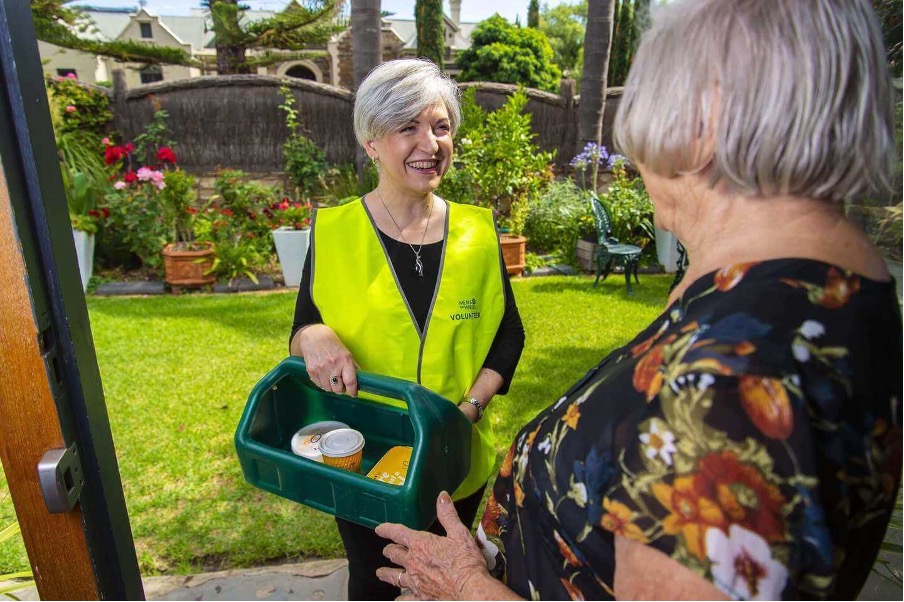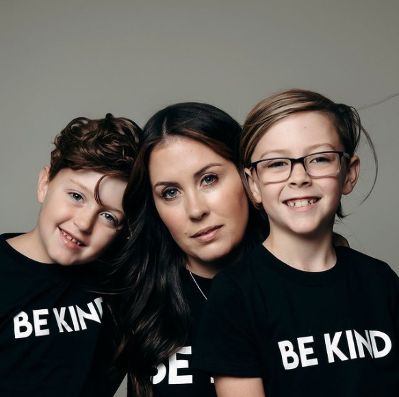Not all Money is Created Equal

“I don’t want more untied money” said no-one working within a non-profit, ever.
Untied money into a non-profit is gold, is it not? You can spend it on whatever is a priority, and often it’s the ‘not very sexy’ things like staff training & salaries, rent, IT improvements, infrastructure etc. So why then do so many non-profits go chasing after TIED MONEY!?
A philanthropic grant – whether from government or a company foundation - is tied money. It’s tied to the program or service that you request the money for. And generally, the reporting requires very detailed accounts of how every dollar has been spent and the impact of the investment – what difference has it made? All very time-consuming. And if all the money from the grant goes to the program or service, who’s paying you to manage the relationship and write that detailed report? Aha! Unless the grant has an allowance for that, then you must dip into another pot of money to fund YOU.
A sponsorship is tied money. It’s tied to the p...
A Partnership for People and Planet

In late 2021 Conservation Volunteers Australia (CVA) forged a brilliant partnership with the Bupa Foundation called ‘Healthy Planet, Healthy People’.
Bupa is a healthcare company committed to helping people live longer, healthier & happier lives and making a better world. Conservation Volunteers empowers communities across Australia to take action for a thriving future for humans and nature. This shared commitment to people and planet is at the heart of the partnership. After all, the health of the planet and the health of humans is intrinsically interwoven.
The partnership is a significant next step in Conservation Volunteer’s ambitious 5-year agenda to build and activate a nationwide community of 1 million Nature Stewards focused on protecting our natural environment against climate change and biodiversity loss and their impacts.
At the launch of the partnership, Bupa Asia Pacific CEO, Hisham El-Ansary, said: “As millions of Australians emerge from life in lockdown, there has neve...
A Lifeline in Lockdown

A standout partnership that emerged during the pandemic was Reckitt’s alliance with the quiet achiever - Meals on Wheels Australia. It was topical, beautifully executed and a perfect alignment of goals.
Meals on Wheels delivers more than 14.8 million meals to elderly Australians a year. The onset of COVID-19 created an even more testing time for an already vulnerable elderly population, and while the country went into lockdown, demand for the Meals on Wheels services increased.

Reckitt and Meals on Wheels were both aware of the immense challenges the pandemic posed to the elderly and wanted to focus efforts on protecting those at greater risk. With a shared common purpose to support the wellbeing and protection of vulnerable Australians, Reckitt provided crucial hygiene products to ensure that the Aussies who needed it most could have a hygienic home during the early months of the pandemic. This meant that over $1m worth of disinfectant products (Glen 20, Pine O Cleen and Dettol h...
Asking Quality Questions

You’ve heard it before: “the quality of your life is determined by the quality of the questions you ask”. The non-profit sector is amidst an exciting evolution (in part due to the pandemic) causing changemakers to ask questions – many of them challenging.
When we ask the right – or better – questions, we increase the chances of getting a better answer, and outcome. The quality of questions being asked within your organisation right now, could be the difference between it thriving, or not.
What IS a good quality question you may ask! Let’s look at a few, in relation to corporate partnerships. The simple, Who, What, Why, When, How is a good starting point.
Q “WHY do we want corporate partnerships?”
A fundamental question that’s often missed. My last blog dives into this, where you can also download a guided exercise & Template to help you answer this question. It’s critical that a corporate partner is aligned to your Vision, Mission & Purpose, not just a ‘donor’ that puts money...
Why Ask Why?

There’s just three little letters that make up a big and important word: WHY.
I became intimately acquainted with the word WHY during the early 1990s. In the midst of a messy relationship break-up, I’d sing the Annie Lennox song ‘Why’ through tears day and night. If you don’t know the song check it out, it’s a stunner.
Over a decade later, Simon Sinek released his book ‘Start with WHY’, and turned the word WHY on its head. Suddenly the word wasn’t just at the start of the question; it WAS the question. What’s your WHY? Simon’s premise is simple: there are thousands of successful companies and leaders, but only a few ever change the world, so what makes them different from the rest?

Simon’s book stated that people don’t buy what you do, they buy WHY you do it. In other words, an organisations’ core purpose. He asserts that those successful companies start with WHY, and then use this as a guiding principle for all communications.

Now you’d think that non-profit organisations ...
Lessons from a Pop Tart

One of the things I’m most passionate about is helping changemakers prepare for success. For many entrepreneurial non-profits, the idea of preparation and planning is just plain boring, they want to get out there and get results RIGHT NOW. The reality is, it simply doesn’t happen that way. As Steve Jobs once said, "if you really look closely, most overnight successes took a long time”.
Jerry Seinfeld, American comedian, was hailed an ‘overnight sensation’. Love him or hate him, he’s one of the most successful self-made multi-millionaires of all time, with an estimated wealth of $950m[1].
Dig a little deeper and you’ll discover that the key to his success? Many years of incredible hard work and dedication to his craft. Jerry’s mum was of Syrian descent, his father Hungarian and he grew up in a humble Jewish household. He became involved in various school productions and tried out open mic nights around New York, and got a small role in the sitcom Benson in 1980, from which he was ...
Time for a Change

And just like that – Autumn is upon us. It’s my favourite season. Harvest festivals, a crisp orange carpet on my driveway, cooler temperatures, shorter days, cosy nights in front of the fire sipping a Pinot.
As the leaves start to change colour and fall, nature is showing us the beauty of letting go, and the opportunity to embrace the new. Letting go of old patterns that may not work for us anymore, and embrace new habits that serve our goals and purpose.
Letting go
Autumn is a brilliant time to reflect on strategies and processes that you’ve followed in the past, and assess if they’re going to work for you, moving forward. The world is not what it was 2 years ago. Consumers have clarity on what’s important to them. Companies and brands have been in constant pivot mode, in order to survive and stay ahead of customer’s changing needs. Many non-profits have taken risks that have paid off, for others it’s been a catastrophic few years.
Are you satisfied with your non-profit’s a...
Zero to Hero for Bully Zero

Bully Zero is a small charity that punches way above its weight. They educate and advocate to prevent and reduce bullying across Australia, delivering their programs to schools and workplaces across Australia. Since it was founded in 2013 by Ali Halkic, Bully Zero has visited 1,214 schools, has run 3,642 education sessions, and educated over 403,000 young people, parents and employees on bullying prevention.
CEO Janet Grima applied for the Marlin Communications/BePartnerReady.com® scholarship in 2021 and was victorious. Despite being a hands-on CEO, Janet dedicated a day a week to implementing the 7 steps of the program and before she had completed the program, was approached by a corporate.
Janet being Janet; took the bull by the horns and pitched and won the partner, adding to her existing partner – socially conscious clothing label Kind is Cool. She is also negotiating with yet another partner, soon to come on board.

For Janet, doing the BePartnerReady.com® program has enab...
Heart & Impact


Former BePartnerReady.com® student the Heart Foundation signed up a new partnership with Coles in 2020. Together, their goal was to support Australians’ aspirations to become healthier and more active.
Coles launched the Coles Health Hub, a one-stop online portal offering practical information & solutions around exercise, diet & nutrition, mental health and most importantly, motivation.
This partnership couldn’t have come at a better time, as many Australians struggled to maintain their health goals during 2020/21 with a series of very challenging lockdowns, playing havoc with people’s mental health, ability to exercise and eat well.
Coles brought on board sporting legends, including AFL star player James Podsiadly, to provide inspiring videos and motivational messaging as part of a 28-day crusade where health food products in Coles were reduced by 50%. News Corp helped to amplify the message even further by running a #RejuveNation campaign across print and digital media.
This...
Crusading Consumers Emerge from Lockdown Championing Charity

Despite living in a COVID bubble for the past year, Australian consumers have come out swinging in favour of companies that support charities.
New research (launched 29 October 2021) reveals that during lockdown, Australians have become more concerned about social and environmental issues, and they’re demanding that the corporate sector step up and show leadership in solving social issues. 62% of Australians say that during COVID, they’ve re-evaluated their priorities in life, and if buying a product or service, they’d rather buy from companies doing good.
The Conscious Consumer Report 2021, reveals the Conscious Consumer movement has reached a mass market peak, with a new kind of activist consumer emerging from lockdown – the Crusading Consumer.
The research by Di Marzio Research and BePartnerReady.com®, conducted in August 2021, reveals that just under two-thirds of Australians believe that Corporate Australia, of all the institutions, has the greatest potential to solve societa...

